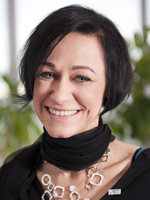Quality of transport options at residential locations
GeSMo aimed at developing a comprehensive, gender-oriented evaluation model for measuring the mobility-related quality of a given location by considering transportation-related evaluation criteria, specific weightings for group-related requirements and sustainable mobility styles, available data sources and different approaches for visualizing mobility-related quality at locations.
The project focused on two target groups: firstly, people with multiple responsibilities and duties (employment, family, household etc.) and therefore complex mobility patterns. Currently this group mainly consists of females; however, related project outcomes and developments based on these results are not limited to this group. Secondly, elderly people who particularly need barrier-free accessibility to transportation systems in order to maintain a high quality of life and participate in social activities are specifically regarded in the project. This group is equally mostly consisting of females.
The project resulted in the development of a theoretical, gender-oriented evaluation model, which can serve as evaluation tool for assessing the location-related quality of supply and as a basis for developing an efficient planning instrument. Subsequently, it can be further developed into a technological information system which is adequately considering gender-related aspects and raising the awareness and motivation for sustainable mobility styles, and which can be used by both private individuals and public planning agencies for evaluating the mobility-related quality of locations or regions.
GeSMo followed a multi-disciplinary approach which embraces on the one hand the analysis of specific requirements of the two selected target groups as well as on the other hand the screening and inclusion of available data sources concerning infrastructure and facilities. The evaluation model is based on different scientific concepts (accessibility models, time geography, weighting of indicators etc.) and has been tested for two selected locations. During the two years’ duration of the project the target groups were continuously involved in the scientific process.




